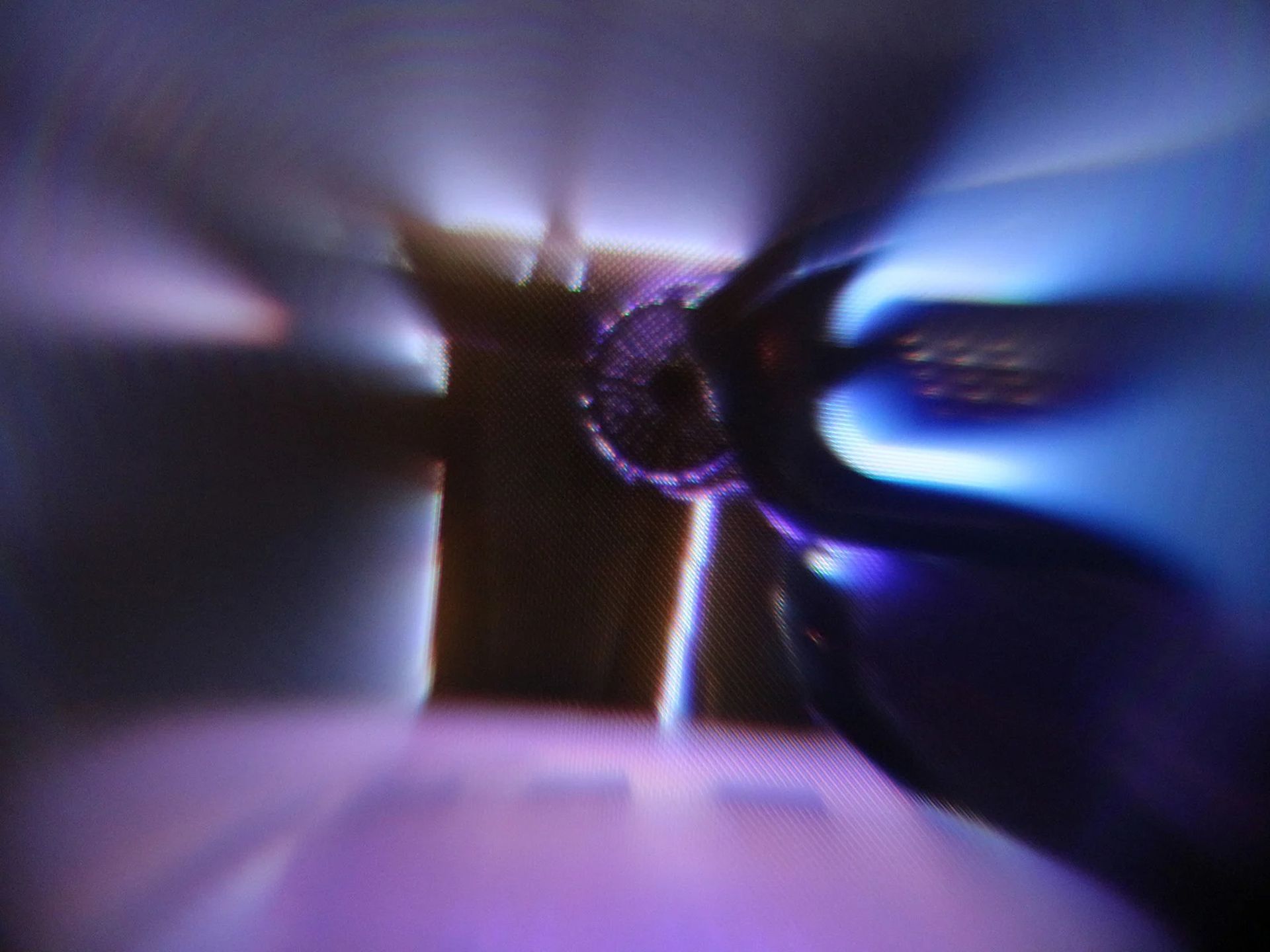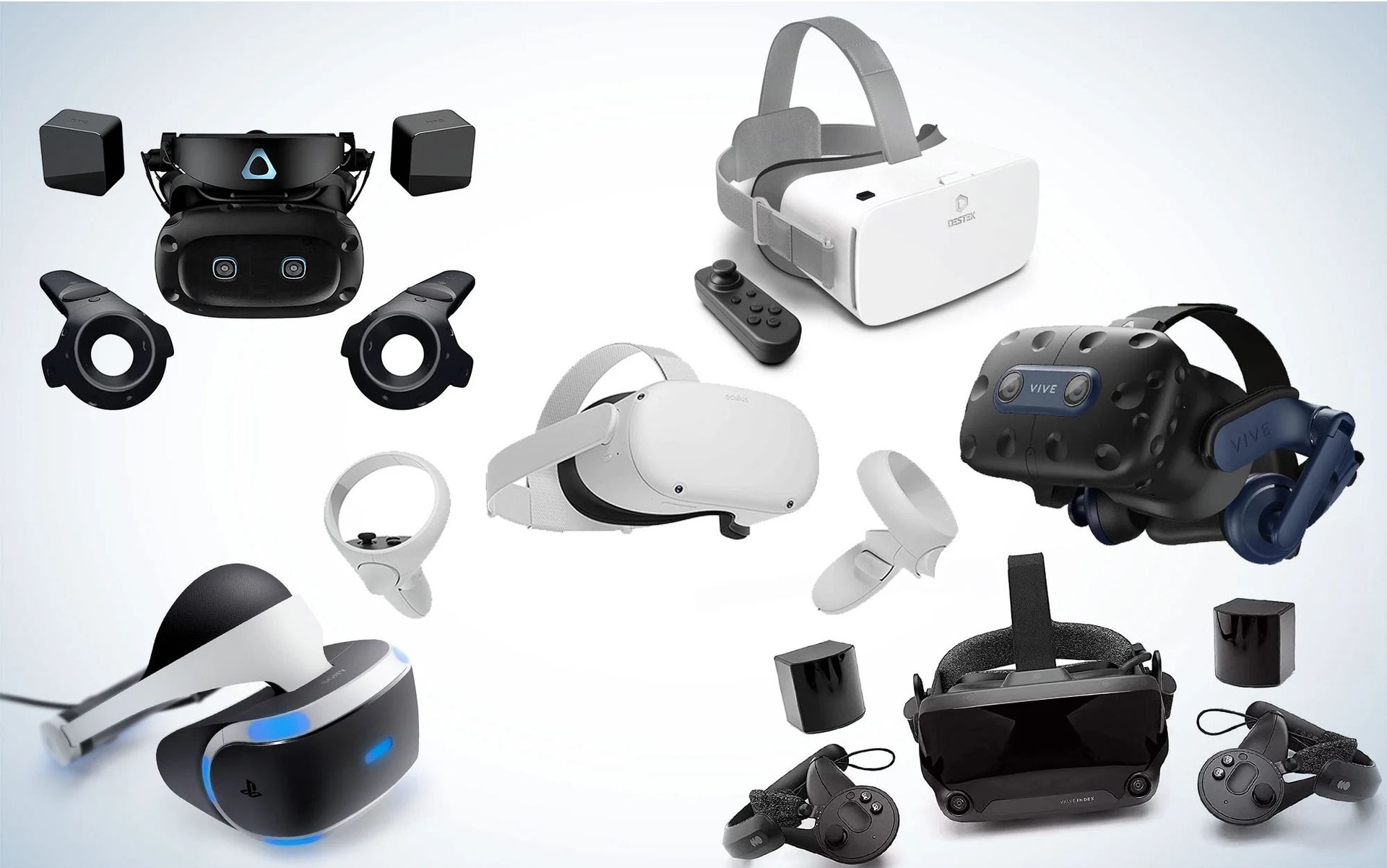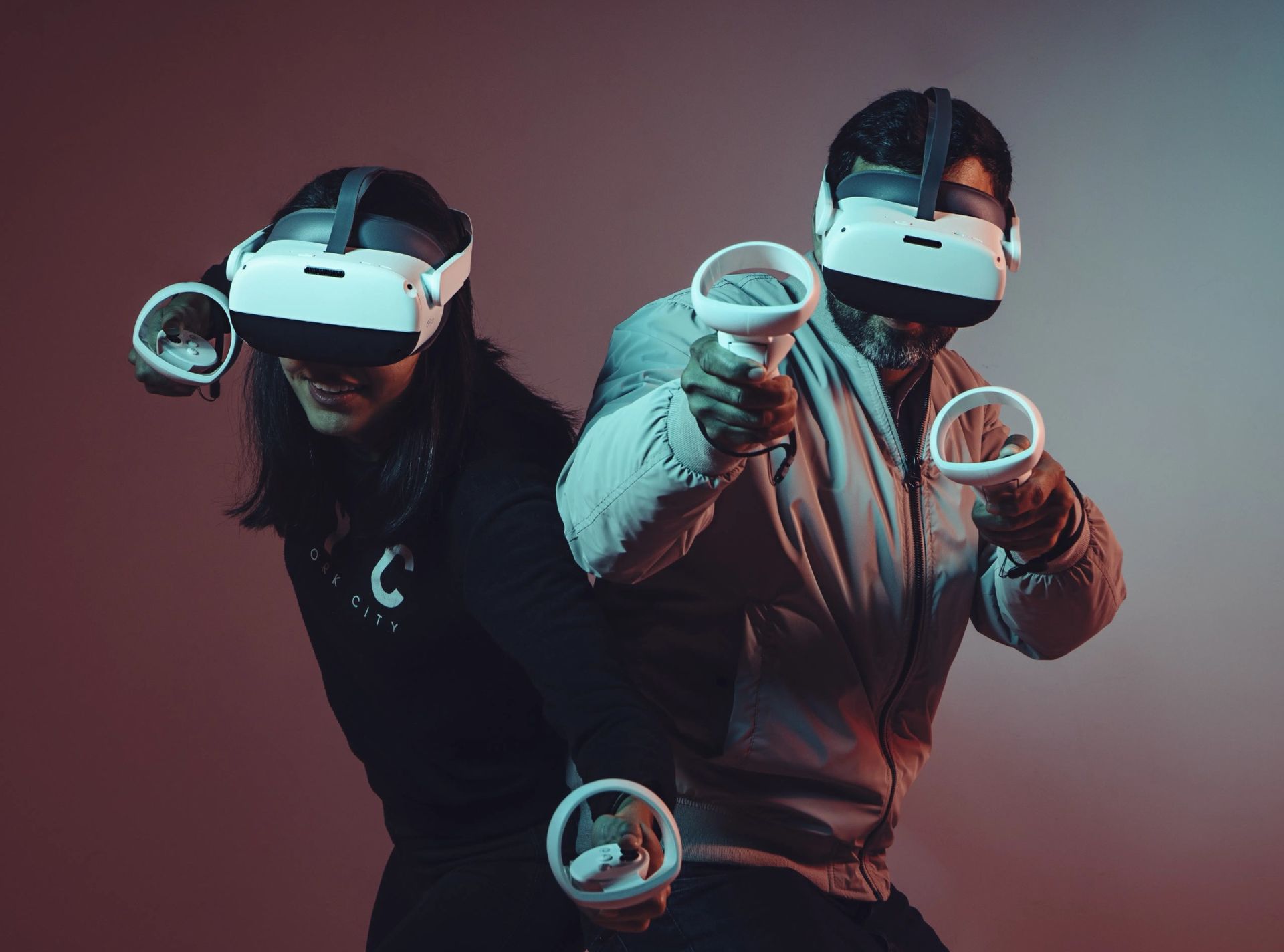When using contemporary virtual reality headsets, the “screen door effect” is a commonly discussed issue. It appears as if you’re looking at the world through a mesh screen, and it’s due to the black, vacant gaps between pixels up close.
What is the screen door effect?
Video game scenarios are known to cause screen artifacts, which decrease the image quality and immersive experience. The screen door effect may be bothersome, eyestrain, or headaches in some people.
The screen door effect is more prevalent in lower-quality displays than higher-end gadgets, and screens with lower pixel densities and dots per inch (DPI) are more prone to exhibit it. When looking at one point on a screen moving one’s head slowly, the screen door effect is much easier to see. The effect is most readily noticed when the user is close to the display or when content is enlarged.
When utilizing a virtual reality headset, the screen door effect is a serious problem. Some people are more prone to and disturbed by the screen-door effect than others, and fast-paced games may help mitigate the visual blemish.
What does the screen door effect look like?
Mesh screens are found in screen doors, and when you look through them, it appears as if you’re viewing the world through a grid. That’s precisely what the screen door effect is in a virtual reality headset.
The screen door effect varies from time to time. The visual impact is determined by the type of headset you’re wearing as well as the material you’re viewing. The effect may be seen differently by different individuals’ eyes and brains. And, while two individuals may observe the same visual effect, some people may be irritated more than others.

What causes the screen door effect?
The display inside the headset generates the screen door effect (SDE). Modern flat-panel displays employ pixels, which are tiny individual components positioned on the panel. There’s a little gap between each pixel. Because that space isn’t lit, it gives the impression of a black visual grid.
Not to put too fine a point on it, but this issue isn’t new to virtual reality headsets. It can also happen with other types of displays. It’s worse with VR headsets than with other contemporary displays since our eyes are so close and we’re viewing the panel through magnifying lenses. To put it another way, you’re looking at the display up really close, which lets you view the pixels and gaps between them in great detail.
How to fix the screen door effect?
Users can prevent the screen door effect by ensuring that their device displays have a high DPI. Displays may also be adjusted to minimize the impact. In the case of VR headsets, the gadgets themselves may be made to utilize lower magnification lenses.
On higher-density displays, the effect isn’t as apparent because there are more pixels per square inch (PPI). This implies the pixels are packed closer together and there is less distance between them. The screen door effect becomes less obvious and may nearly be eliminated as the space between pixels shrinks.
In other words, high-resolution panels are required for VR headsets, and this issue will be resolved as technology advances. Future VR headsets will address this issue.

The problem is most acute with the first generation of consumer VR headsets. For example, the first generation of consumer Oculus Rift and HTC Vive have 2160×1200 resolution displays. The more costly HTC Vive Pro has a 2880×1600 panel, which makes pixels considerably denser.
One option for future updates is to add visual filter effects or headset lenses that use less magnification.
How to reduce the screen door effect today?
The screen door effect is only a minor annoyance when utilizing a current-generation VR headset. It will not be eliminated by any trick, but here are some tips:
Don’t worry about it. It’s a visual effect, and if you’re paying attention to it and looking for it, it will be more apparent. Try to banish the visual anomalies from your mind while focusing on the game or adventure you’re having. Unless this issue is emphasized to them, first-time VR users may not even realize that this problem exists. This is the most essential advice we can give you.
You might also give a higher graphical detail game a go. When looking at a wall that is all one color, the screen door effect is most obvious because you can see the black mesh separating the flat color. In contrast, a detailed picture with many colors, including blacks, may have a less noticeable effect. The screen door effect will be more apparent in some experiences than others. If it’s particularly evident in one title, don’t worry; it won’t be as obvious in all of them.
If you’re really sensitive about screen door effect, you might want to invest in a higher-resolution panel for your headset. For example, an HTC Vive may be exchanged for an HTC Vive Pro if it bothers you that much. The screen door effect will only go away with better hardware. Future headsets will need higher-resolution displays at a lower price, allowing everyone to enjoy the experience more. If you already have a good VR headset, make sure to check our selection of must play VR games announced at Meta showcase.

While it won’t eliminate the screen door effect, it’s also important to calibrate your headset properly to assure you’re getting the best visual outcomes. This entails moving your headset up and down on your face and changing the lens spacing according to your eyes. At least the picture will not be blurry. For additional information, go through the manufacturer’s manual for your VR Headset.
However, we strongly advise you to ignore the screen door effect and any other visual flaws. And instead of focusing on the drawbacks, immerse yourself in the VR experience. VR headsets are still a fairly new consumer product, and considering the technology involved, it’s amazing they function as well as they do. It’s remarkable that the screen door effect isn’t any more apparent!
The screen door effect is the natural result of having such up-to-date displays so close to our faces. The issue is continuously being addressed, but it will have a significant impact on your VR experience for many years to come. That’s why doing as much study as you can before buying a VR headset is critical to ensure that the visuals are good enough.
If you are a fan of video games, we need to inform you that Among Us VR will arrive in late 2022. Visual issues are not the only focus area of hardware manufacturers, haptic feedback is also a very important aspect to consider, that is why the Metaverse controller will make it possible to feel objects in VR.





